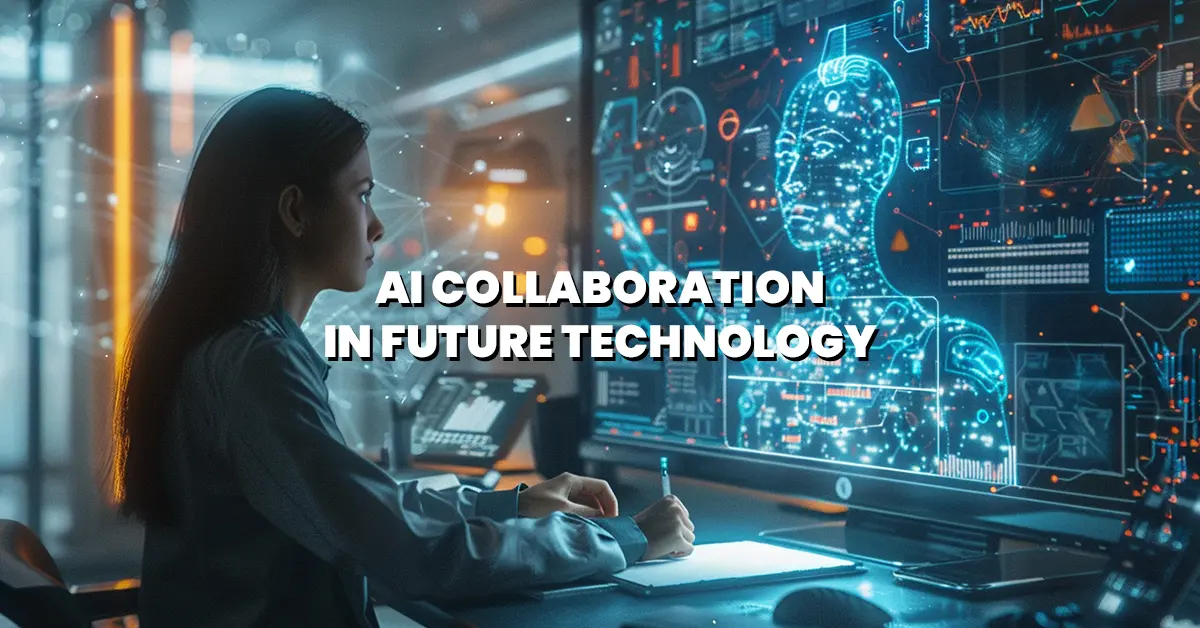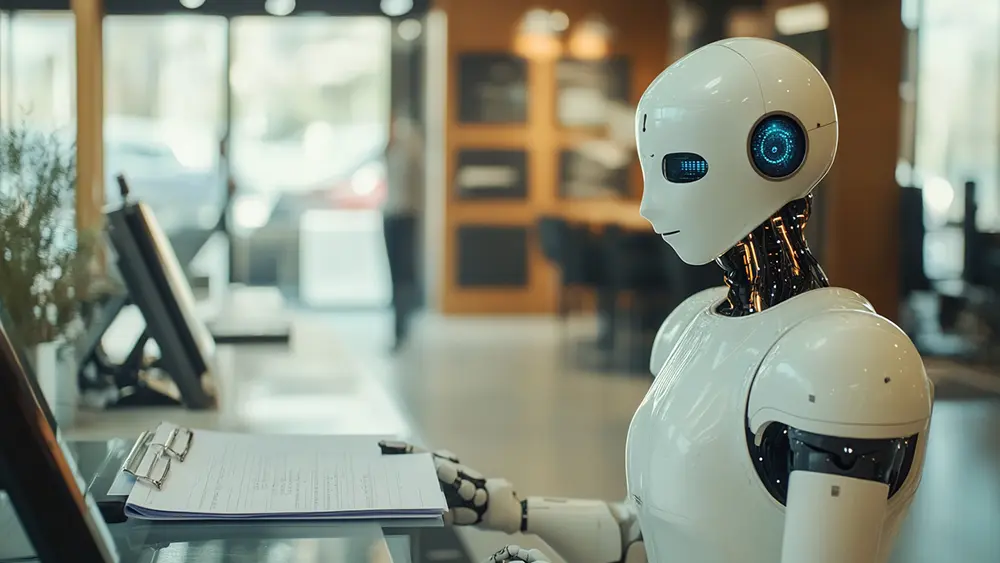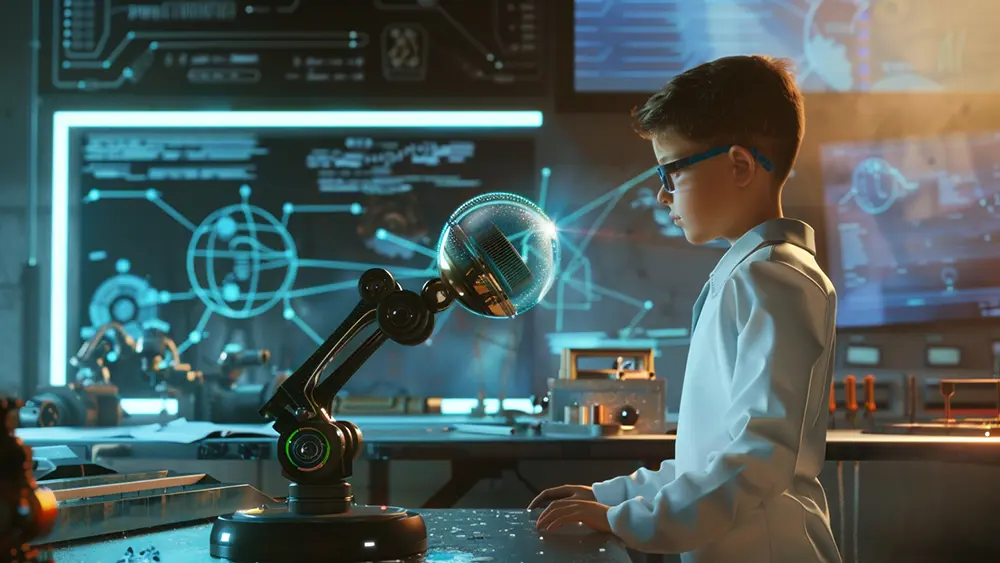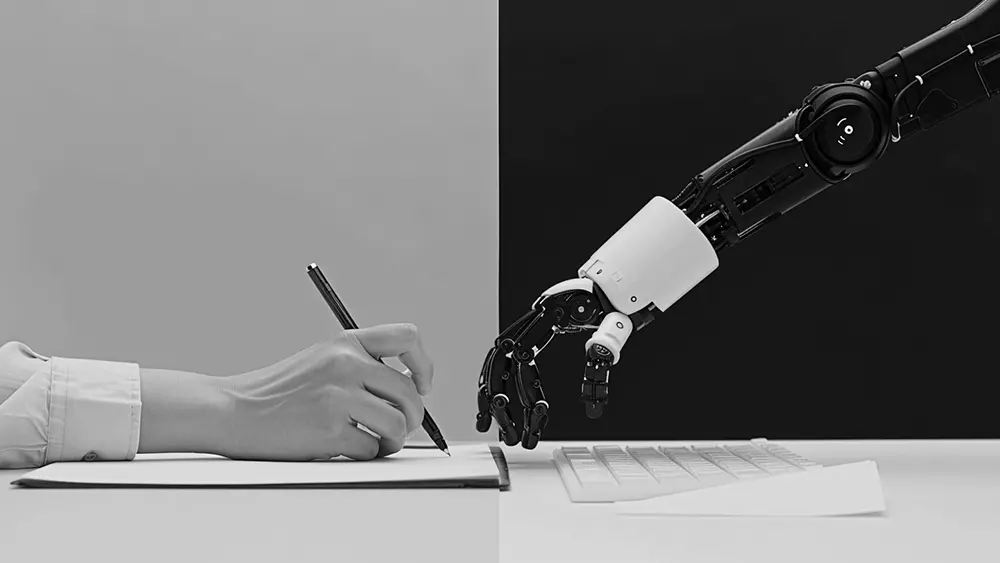
“AI isn’t just the future – it’s the future’s best teammate.” Picture this: You’re working on a project, and your AI partner seamlessly jumps in, handling everything from data analysis to making creative suggestions. You’re not just interacting with different kinds of technology; you’re collaborating with it. AI is no longer just a tool; it’s a coworker, a co-creator, and maybe even a problem-solving buddy. Welcome to the future of technology, where artificial intelligence doesn’t replace us – it works with us.
The Evolution from Tools to Teammates
For years, we’ve treated technology as just another set of tools. Need to calculate something? There’s a calculator for that. Need to design something? Open Photoshop. But AI is changing the game. Instead of simply doing tasks, AI is learning to understand them, anticipate what comes next, and offer smart solutions. The concept of AI collaboration means we’re not just programming machines anymore; we’re working alongside them.
Think about it: when Google predicts your search query or when Spotify curates a playlist that feels like it’s reading your mind, AI is actively collaborating with you. It’s learning your preferences, recognizing patterns, and evolving with you. And this is just the beginning.
AI and the Creative Industry: Co-Creating the Future

You might think AI collaboration is only for tech geeks and engineers, but hold up. It’s already transforming the creative world, too. In design, AI tools like Adobe Sensei are helping graphic designers by suggesting layout tweaks, color schemes, and font pairings. For writers, platforms like Grammarly don’t just fix typos; they analyze tone, style, and clarity, offering real-time feedback that makes your content stronger.
Ever heard of AI-generated art? Platforms like DALL·E 2 or Runway ML allow artists to collaborate with AI to create entirely new visual experiences. It’s like having an infinite creative partner that never runs out of ideas. Imagine working on a digital painting and having your AI collaborator suggest a new brushstroke technique or a color palette that perfectly matches the mood you’re going for. It’s creativity without limits.
The Next-Level Office: AI in Remote Collaboration
Remote work? Yeah, that’s not going anywhere. And AI’s role in making remote collaboration smoother is massive. Instead of spending hours in meetings, we could have AI assist by summarizing key points, suggesting action items, or even predicting potential obstacles in a project timeline. Your virtual assistant won’t just schedule your meetings – it’ll join them, take notes, and create a task list for you by the time the call ends.
Platforms like Microsoft Teams and Slack are already integrating AI tools that automate project tracking and data analytics. Imagine a future where you don’t have to manually assign tasks because AI does it for you, based on team strengths and past performance. You don’t even have to check up on people – AI sends automatic updates, keeping everyone in sync without the awkward “Where are we at?” messages.
AI in Healthcare: Saving Lives, Not Replacing Doctors

AI in healthcare is one of the most exciting fields right now. We’re talking about systems that can diagnose diseases faster than any human doctor, analyze medical images with pinpoint accuracy, and even predict outbreaks before they happen. But here’s the thing – AI isn’t replacing doctors; it’s working alongside them.
Take IBM’s Watson, for example. It’s being used to analyze vast amounts of medical data, helping doctors make better treatment decisions. AI can scan thousands of medical studies in seconds, spotting trends that would take humans years to process. Doctors then take that information and apply their experience and judgment to treat patients. In this way, AI is acting like the ultimate research assistant, providing the insights that help save lives.
But the collaboration doesn’t stop there. In the future, patients might interact with AI first – using chatbots for symptom checks, scheduling appointments, or even getting medication reminders. This frees up doctors to focus on what they do best: personal care and complex decision-making.
AI and Human Resources: Say Goodbye to Bias
Recruiting talent has always been a tricky, biased process. But AI collaboration is stepping in to level the playing field. AI-driven HR platforms are now being used to analyze job applications without letting unconscious biases influence decisions. These systems focus purely on skills and qualifications, ensuring that every candidate gets a fair shot.
Companies like HireVue are using AI to analyze video interviews, not just looking at what candidates say, but how they say it – body language, skillful resume, tone of voice, and facial expressions. While this might sound a little creepy, it’s actually helping recruiters make more objective decisions. AI also helps HR teams predict which employees are most likely to stay long-term, which skills are needed for future roles, and even what kind of team dynamics will work best.
But AI isn’t the sole decision-maker here. It’s collaborating with HR professionals, providing data-driven insights that allow them to make better hiring and team-building decisions. This makes the hiring process smarter and, more importantly, fairer.
The Future of AI Collaboration in Education

Teachers and students are another pair set to benefit from AI collaboration. In the future classroom, AI won’t just be a learning tool – it’ll be an active collaborator in the teaching process. Think of AI as your classmate who’s always ready to help you study, find resources, and quiz you before an exam.
Tools like Duolingo are already using AI to personalize language learning experiences, adjusting lessons based on how quickly (or slowly) you’re progressing. But it’s about to get way more advanced. Imagine AI that can adapt entire curriculums to match the learning styles and needs of individual students. AI could offer personalized tutoring, assess areas where students are struggling, and suggest targeted lessons to help them improve.
For teachers, AI can handle the heavy lifting when it comes to grading, attendance, and even curriculum planning. Teachers won’t just be standing in front of the classroom; they’ll be collaborating with AI to create a more engaging and customized learning environment. Less busywork for them means more time focusing on what really matters: teaching.
AI and Ethical Concerns: Finding the Balance
Okay, AI collaboration sounds amazing, but let’s not ignore the elephant in the room: ethics. With AI taking on more responsibilities, questions about privacy, security, and bias are growing louder. What happens when AI systems make mistakes? Who’s accountable? And how do we ensure that AI isn’t reinforcing harmful biases?
These concerns are valid, but they’re also part of the collaboration process. As we develop more sophisticated AI systems, we need human oversight to ensure things stay ethical and transparent. Collaboration doesn’t mean handing the reins entirely to AI; it means working alongside it while staying in control of the bigger picture.
The Final Shift: Humans and AI as Co-Workers
At the end of the day, AI collaboration is about teamwork. The idea that AI will take over human jobs is outdated. Instead, AI will enhance the way we work, create, and innovate. We’re moving towards a future where humans and machines aren’t in competition – we’re partners, each bringing unique strengths to the table.
Leave a Reply